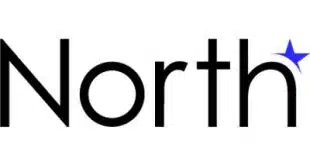![]()
By Steven Velasquez, Senior Vice President and Head of Partner Business Development – U.S. Bank | Elavon
The emergence of open banking, financial services APIs, and banking as a service has changed the landscape of the payments ecosystem. It is no longer enough to offer integrated payments with your software solution, but rather it’s table stakes. So how do you differentiate yourself from the competition and future-proof your business for sustainable growth? The answer lies in the value you bring to the payments experience, and not just the payments experience itself. The rise of open banking and powerful APIs enables you to offer more than just payments while adapting to, and exceeding, consumer demand.
In fact, we’ve seen the shift in our daily lives as we go about paying our bills, applying for loans, or using budgeting and food delivery apps. While we don’t give this much thought at the time, we easily handle most of these tasks via APIs that connect our banking account information to our app of choice. The convenience and ease of the transaction can even affect who we buy from, how and what we buy from them, and if we do any additional business with them – open banking at its most valuable.
At the end of 2023, the open banking market registered a compound annual growth rate (CAGR) of 19.3% and will grow from US$ 22,160 million in 2024 to US$ 133.5 billion by 2034.[i] So, while we know this impressive growth has changed consumer buyer behavior, what are the implications and possibilities for B2B payments? Let’s take a closer look at how integrating financial services APIs with your software solution can maximize ISV revenue potential while providing more value and a better user experience.
One of the most critical components of ISV success is driving increased customer loyalty and a stickier relationship with your users through a variety of service offerings. Integrating financial services APIs enables you to offer ‘traditional’ banking solutions to your user base without them having to use another platform. For example, a healthcare payments software’s main function may be to streamline revenue cycle management, but through a FBO account API, it’s also able to facilitate insurance claim reimbursements as well.
From initiating real-time clearing and settlement of customer invoices to sending request for payment reminders, the use cases are varied and numerous. According to McKinsley Digital, banks and financial institutions are increasingly looking to deploy APIs for all areas, from traditional business to the emerging playing fields of banking as a service, platform as a service, and embedded finance. Whatever their function – bottom line results mean more efficiency, increased security, deeper relationships, and a more robust offering.
Building a payments strategy to future-proof your business
So, how do you evolve to meet this changing demand and position your business for sustainable growth? We can help. Backed by the strength and stability of U.S. Bank, we can help you maximize your revenue potential, accelerate your speed to market, and scale your business for sustainable growth with powerful APIs and an online platform that simplifies the discovery of hundreds of payments and gateways solutions.
We invested in our integrated software solutions ecosystem to provide you and your merchants with a way to self-discover various software and gateway solutions that work with Elavon to cut through the market noise and simplify the discovery process. What does that mean for you? Whether you are looking for a healthcare solution or text-to-pay functionality, you can find the perfect fit. Learn why more than 1,000 integrated partners trust us with their business. Growth starts here. Call us at: 800.725.1243.
[i] Future Market Insights





